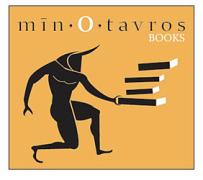Oxford, England - The Bodleian Libraries has presented novelist Sir Kazuo Ishiguro with the Bodley Medal. Sir Kazuo received the award at the FT Weekend Oxford Literary Festival on 3 April 2019, when he delivered the annual Bodley Lecture.
Sir Kazuo appeared in conversation with Richard Ovenden, Bodley’s Librarian, who presented him with the medal at the end of the event.
Ovenden said: “Sir Kazuo Ishiguro is one of the greatest living novelists whose work has made a major contribution to literature and culture. He has formed a highly original, distinctive and compelling literary voice, one which brings to the fore major themes of inner conflict, the challenges of memory, the struggles between modernity and the past, and the realities of human emotion. We are delighted to honour him with the Bodleian Libraries’ highest honour, the Bodley Medal.”
Sir Kazuo said: “Libraries play a crucial role in shaping our memory of who we are, and the narratives that determine who we’ll become. In this sense, writers and libraries share a common - and solemn - responsibility. I’m especially moved and proud, then, to receive this rare honour from Oxford University’s Bodleian Libraries - an institution that can claim to be not only one of the greatest in the world, but in western history.”
Sir Kazuo is an award-winning British novelist, screenwriter, short story writer and songwriter. He is widely considered one of the greatest contemporary fiction authors in the English-speaking world.
He was born in Nagasaki, Japan, in 1954 and moved to Britain at the age of five. His eight works of fiction have earned him many awards and honours around the world, including the Nobel Prize in Literature (2017) and the Booker Prize (1989). His work has been translated into more than 50 languages. His novels The Remains of the Day and Never Let Me Go were made into acclaimed films. Sir Kazuo was given a Knighthood for Services to Literature in 2018, and also holds the French decoration, Chevalier de l’Ordre des Arts et des Lettres, and the Japanese decoration, Order of the Rising Sun, Gold and Silver Star.
The Bodley Medal is awarded by the University of Oxford’s Bodleian Libraries to individuals who have made outstanding contributions to the worlds in which the Bodleian is active including literature, culture, science and communication. Past winners include biographer Claire Tomalin, novelist and screenwriter William Boyd, classicist Mary Beard, physicist Stephen Hawking, film and theatre director Nicholas Hytner, novelist Hilary Mantel, the late poet Seamus Heaney, writer and actor Alan Bennett and inventor of the World Wide Web, Sir Tim Berners-Lee.
The Bodleian Libraries is a cultural partner of the FT Weekend Oxford Literary Festival, which runs from Saturday, 30 March to Sunday, 7 April 2019. Events will take place at the Bodleian’s Weston Library and Divinity School as well as at venues across the city.







